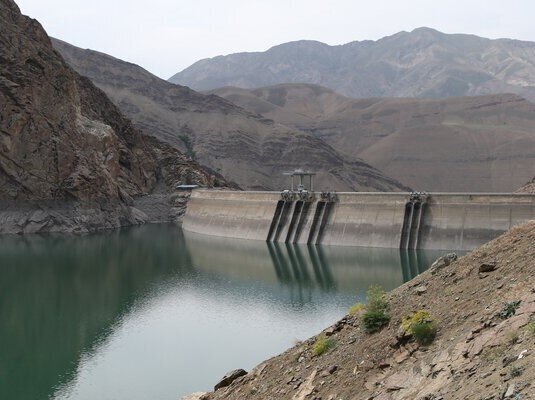Iran’s dam reservoirs reach 50% capacity

TEHRAN - Iran’s dam reservoirs have reached 50 percent capacity, a slight increase from the previous week, according to the Iran Water Resources Management Company. Despite the modest rise, inflows have dropped sharply compared to the same period last year, underscoring the need for continued water conservation as the country approaches the hot season.
Since the beginning of the current water year, which started in late September 2024, total inflows to dams have reached 15.06 billion cubic meters, marking a 35 percent decrease from the 23.32 billion cubic meters recorded over the same period last year. The volume of water stored in the country’s large and strategic dams has fallen 16 percent year-on-year, reaching 25.87 billion cubic meters compared to 30.76 billion cubic meters a year ago. Outflows from the dams have also declined by 6 percent, dropping from 14.86 billion cubic meters last year to 13.72 billion cubic meters so far this year.
Twelve of the country’s major dams are now operating at less than 20 percent of their capacity. These include Lar Dam in Tehran Province, Doosti and Torq Dams in Khorasan Razavi, the 15 Khordad Dam in the Qomrud Basin, Esteqlal, Shamil, and Neyan Dams in Hormozgan Province, Tahm Dam in Zanjan, Roudbal Dam in Fars, Tangouyeh Dam in Sirjan, Kerman Province, and Saveh Dam in Markazi Province.
Additionally, 13 other dams have shown significant declines in water levels, ranging from 25 to 75 percent compared to last year. These include dams in the Lake Urmia basin, Amir Kabir, Dez, Karkheh, and Marun in Khuzestan, as well as Sardasht, Jegin, Raisali Delvari, Azad Dam in Kurdistan, and several dams in Golestan, Sistan-Baluchestan, and Markazi provinces.
Despite the recent increase in total storage, officials warn that half the country’s dam capacity remains unfilled and that water use must be carefully managed to address the ongoing shortage.
EF/
Leave a Comment